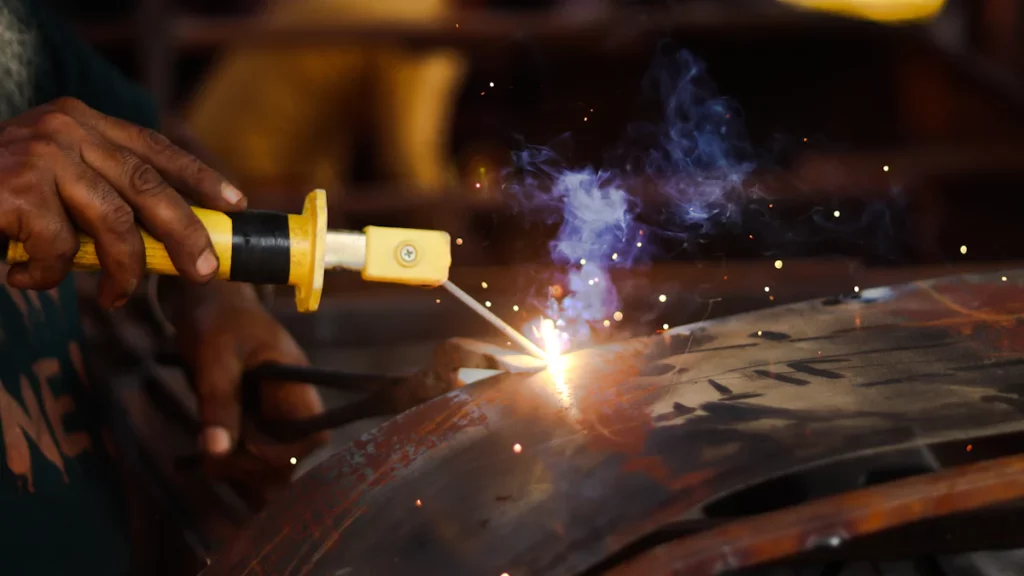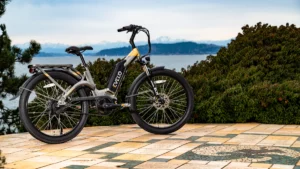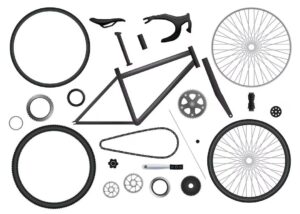As the best material for bike frames, aluminum is a popular choice, accounting for over 40% of the market share. The affordability of aluminum frames makes them accessible to a wide range of cyclists compared to carbon fiber or titanium. Inoltre, aluminum frames are known for their exceptional durability, withstanding rough terrains and impacts while maintaining their structural integrity. Furthermore, aluminum is highly recyclable, appealing to environmentally conscious riders.
Tuttavia, challenges arise in welding aluminum frames due to the production of hazardous fumes containing tiny particles that pose health risks to welders. Regarding the importance of proper welding techniques, TIG welding is the preferred method for joining aluminum bike frames. TIG welding ensures precise control over the heat input, reducing the likelihood of overheating and damaging the frame during the welding process.
To further learn how to weld aluminum bike frame, this article will tell clearly and thoroughly its steps from starting to finishing in the view of professional bike frame factories.

Essential Materials And Equipment to Weld an Aluminum Bike Frame
Before diving into the welding process of an aluminum bike frame, it is crucial to adequately prepare by gathering the necessary tools and materials. Welding an aluminum bike frame requires several essential materials and equipment:
- Aluminum tubing or frame components: High-quality aluminum tubing or pre-fabricated frame components are essential for constructing the frame.
- Aluminum welding filler rod: A compatible filler rod made of aluminum or aluminum alloy is necessary for creating strong welds.
- TIG (Tungsten Inert Gas) welding machine: TIG welding is the preferred method for welding aluminum due to its precision and control. The machine should have AC (alternating current) capability for welding aluminum.
- Argon gas: Argon gas is used as a shielding gas during TIG welding to protect the weld pool from atmospheric contamination.
- Tungsten electrode: A non-consumable tungsten electrode is used to create the welding arc in TIG welding. Thoriated tungsten electrodes are commonly used for welding aluminum.
- Grinder or sander: A grinder or sander is used to prepare the surfaces to be welded by removing any oxide layer or contamination.
- Welding clamps or fixtures: Clamps or fixtures are needed to hold the frame components in place during welding, ensuring proper alignment.
- Welding helmet: A welding helmet with a suitable shade level is necessary to protect the eyes from the intense light produced during welding.
- Welding gloves and protective clothing: Heat-resistant welding gloves and appropriate protective clothing should be worn to protect against burns and sparks.
- Cleaning materials: Solvents or cleaners are used to remove any dirt, oil, or residue from the welding surfaces before welding to ensure a clean weld.
- Wire brush: A wire brush is handy for cleaning the aluminum surfaces and removing any oxidation before welding.
Expert Step to Weld an Aluminum Bike Frame

Once you have prepared the aluminum bike frame and gathered all the necessary tools, it’s time to dive into the welding process. Welding an aluminum bike frame requires precision and attention to detail to ensure a strong and durable final product. This step-by-step guide will walk you through the essential stages of welding an aluminum frame effectively.
Initial Welding Passes: Lay the Foundation
Before starting the welding process, the correct temperature and speed on your TIG welder are crucial. Aluminum is a highly conductive material which requires a higher heat input than steel. A relatively high temperature can lead to overheating and potential damage to the frame, while a low setting may result in weak welds.
Begin by tack welding or spot welding sections of the frame together before creating continuous welds. This helps prevent distortion and misalignment during welding. Maintain a steady hand and consistent travel speed to ensure even penetration and fusion between the base metal and filler rod.
Completing the Weld: Ensure Strength and Durability
Heat and optimal adjustment are also vital factors that aluminum bicycle frame manufacturers always focus on. Aluminum is prone to rapid heat transfer, requiring constant vigilance during welding to prevent overheating or underheating. Adjusting the heat input based on the thickness of the material being welded ensures proper fusion without compromising structural integrity.
Once you have completed all necessary weld passes, it’s time for finishing touches and cooling down. After turning off your TIG welder, allow the welded joints to cool naturally without any forced cooling methods like quenching in water. Rapid cooling can introduce stress into the metal, potentially leading to cracking or distortion in the welded areas. Inspect the final welds for any signs of defects or incomplete fusion before proceeding with post-weld treatments.
After Welding: Ensure the Integrity of the Weld
Completion is not the end. It is vital to check the integrity of the weld through post-weld treatments and thorough inspections. Post-weld heat treatment can enhance the strength and durability of aluminum frames, especially after welding. This treatment is necessary to relieve any residual stresses introduced during welding and improve the overall mechanical properties of the frame.
The Process of Heat Treating Aluminum Frames
Heat treating aluminum frames involves a series of controlled heating and cooling cycles to optimize their strength and hardness. The process typically consists of three main stages:
- Solution Heat Treatment: In this initial stage, the aluminum frame is heated to a specific temperature range where alloying elements dissolve into a solid solution. This helps homogenize the material’s microstructure and prepare it for further strengthening.
- Quenching: Following solution heat treatment, the frame is rapidly cooled by quenching in a suitable medium such as water or polymer solution. This rapid cooling “freezes” the alloying elements in place, preventing them from reverting to their original state.
- Aging: The final stage involves aging the frame at an elevated temperature for a set period. This allows fine precipitates to form within the material, increasing its strength and hardness significantly.
Inspect the Weld and Frame
Once your aluminum bike frame has undergone post-weld heat treatment, it is crucial to conduct thorough inspections to verify weld quality and overall structural integrity. Knowing what to look for in a good weld can help identify potential issues early on:
- Check for uniformity in bead appearance along welded joints.
- Ensure there are no visible cracks or porosity within welds.
- Verify proper fusion between the base metal and filler rod.
- Look out for any signs of overheating or underheating during welding.
Testing the strength of your frame post-welding is equally important in ensuring its longevity and performance. Conducting stress tests by applying gradual pressure or load on different parts of the frame can help identify weak points or potential failures before they become critical issues.
Final Thoughts
A well-executed step on how to weld aluminum bike frame should resemble a neat row of beads, showcasing proper penetration and strength. The subtle discoloration beneath the weld indicates thorough fusion, ensuring the integrity of the final product. This attention to detail is particularly crucial when working with aluminum frames, where precision welding techniques are paramount.
- John Doe, Welding Enthusiast:
“A good weld should look like a row of times and there should be mild discoloration of the material under the weld on the back of the piece so you know you have good penetration.”
When examining reputable Chinese aluminum bike frames like those made by SPLENDERE PRESTO, it’s clear that weld quality plays a significant role in product excellence. These brands prioritize clean and precise welds, not only for structural integrity but also for visual appeal. The seamless integration of frame components through expert welding techniques enhances the durability and aesthetics of the final product.
- Jones, Cycling Enthusiast:
“I have seen some wonderful welds on Trek, SPLENDERE PRESTO, and Gary Fisher bikes that I have had personal experience with. The clean-up of the welds looks wonderful.”

















